
Beat the Heat While Staying Covered
Written by Danielle Askin
It is September and the summer seems like it’s never going to end. If there is a breeze, you can’t feel it through the shell you wear to make your blouse modest or the extra skirt to add two more inches to that skirt that isn’t quite long enough. The fabric clings to your body and by the end of the day, no amount of deodorant is going to make you pleasant to be around. The plight of today’s Orthodox woman is layers because high fashion is not created with the modest woman in mind. On top of that, modern synthetic fabrics absorb heat and hold it in.
There is a better way.
The key to remaining cool in the summer is light fabrics made from natural fibers. In this day and age, you need to be very conscious of the fiber content of the clothes you buy, otherwise you’ll feel like you are wearing a garbage bag – because technically you are. Synthetic fibers are created with the same chemical properties and procedures as plastic.
The rise of synthetic fabrics in the 20th century coincided with the development of the electric washing machine. Natural fabrics break down more quickly under the stress of the mechanical washing machine process than do synthetic fibers which are not biodegradable. Another bonus to synthetic clothing is it does not usually require ironing. Fabric made from natural fibers generally requires regular ironing to look its best; fabric made from synthetic fabrics doesn’t,
because plastic doesn’t wrinkle.
The benefits of synthetic fibers won out in high fashion and usually do not cause much concern for the average Westerner. However, problems arise when multiple layers of synthetic garments are required to achieve a modest look. A thin plastic bag with small holes in it isn’t too uncomfortable if it is only covering a small portion of your body, but when you put two plastic bags over a large portion of your body you are likely to produce huge quantities of sweat and be incredibly uncomfortable to boot.
Few women realize that the chafing they get between the legs when wearing dresses is because the skirt isn’t allowing their legs to breathe. When no air is able to get around your legs, sweat accumulates and deposits salt onto
your skin as it evaporates, and the salt becomes abrasive when the legs rub together.
Another little-discussed concern is yeast infections. The occurrences of yeast infections in women increased along with the popularity of synthetic fabrics in underwear. Adding synthetic undies with one or two synthetic skirts is a recipe for odor and irritation.
The solutions to these problems are easy:
1. Buy natural cotton, linen, or wool whenever possible and
2. Combine garments into one to remove excess fabrics from as much body area as possible.
I will show you how to do that.
The Process
Using a common dress bought from Amazon, I will walk through the process of how to sew the neck portion of the shirt to the dress, the sleeves to the dress. Although not shown here, you can also use the excess fabric from the shirt to add length to the skirt.
The dress can be found at: https://www.amazon.com/MEROKEETY-Womens-Striped-Pockets-Dustypink/dp/B0834WCKC1/
The shirt we are using can be found at: https://www.amazon.com/Amazon-Essentials-Womens-Long-Sleeve-Oxford/dp/B07FHB6YY2/

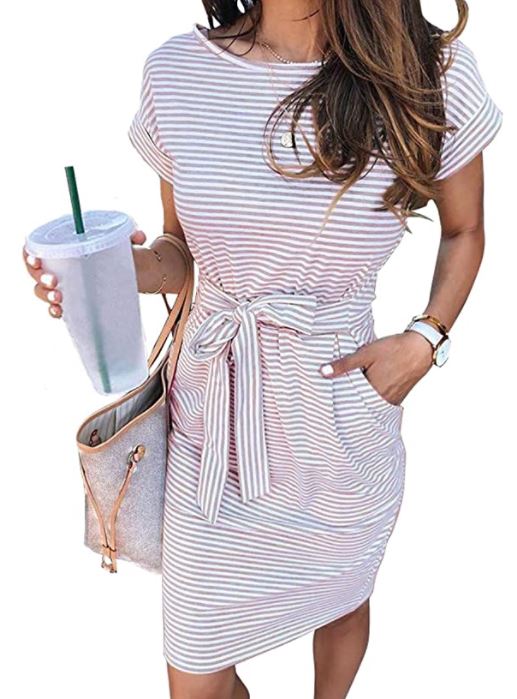
Step 1: Try on the shirt with the dress over it and mark where the stitches for the collar and sleeves meet the shirt fabric
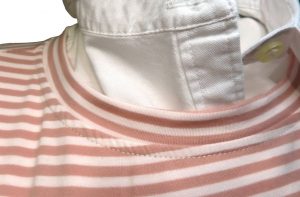
Step 2: Mark with pen, pencil, or pins where the seam of the dress collar meets the dress.

Step 3: Remove the dress and even out the marks around the collar of the shirt.
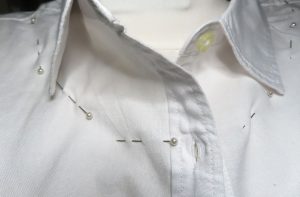
Step 4: Cut 1/2 inch below the line you marked around the collar.
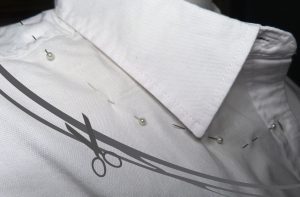
Step 5: Unpick the stitches of the sleeves with scissors or a seam ripper.
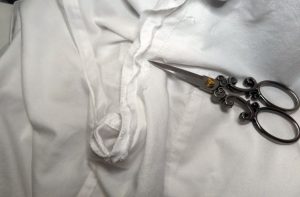
Step 6: Realign the collar to the dress and sew a backstitch through the collar into the stitches of the collar. When attached, pull the loose edge over and cover the cut edge then use a running stitch to attach to the row of stitches you attached to the dress.
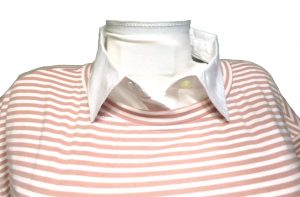
Step 7: Line up the head of the sleeve you removed from the shirt with the shoulder of the dress and stitch the sleeve where it lines up with the stitches of the sleeve hole of the dress. Cut away excess leaving 1/2 inch and turn over to cover the raw edges. Use a running stitch to attach to the sleeve.

Note: For many people, this dress may not be long enough.
A similar process can be used to lengthen the bottom hem by adding excess fabric from the shirt.
The Result
The end result is a modest and neat looking dress that is only one layer thick and breathes well, allowing you to be comfortable in the heat while remaining modestly dressed.
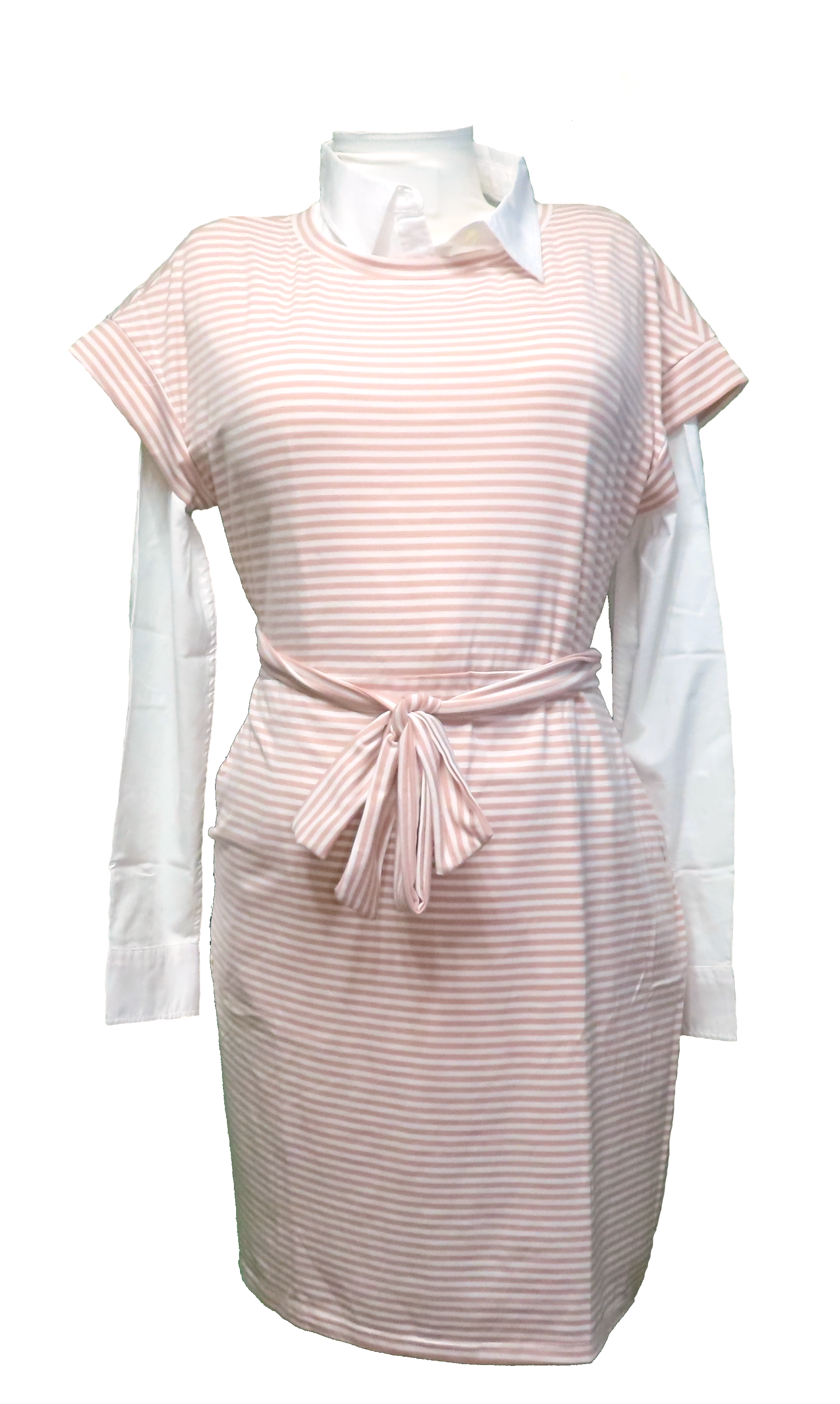
Related Articles
Related
No Hiding Allowed – Tall Is Beautiful
Myth: If you’re tall, you need to hide and deemphasize your height as much as possible. Truth: If you’re tall, you need to rock your height like no one’s business.In the fashion world, there are three categories of height for women. Petite means 5’3” or shorter....
No Hiding Allowed – Seasonal Colors Out of Season
Myth: If you wear a color that isn’t right for the season, you’ll look strange and out of style. Truth: If a color flatters you, then it’s in season for you and you’ll look great.Many times I’ve seen people ask on social media about wearing spring or summer colors in...
No Hiding Allowed – 2 Looks for Mommies
Myth: If you’re a mother, you need to only wear clothes that are casual and comfortable and not stylish or flattering.. Truth: If you’re a mother, you absolutely should consider wearing clothes that are fitted and flattering as well as being casual and...
